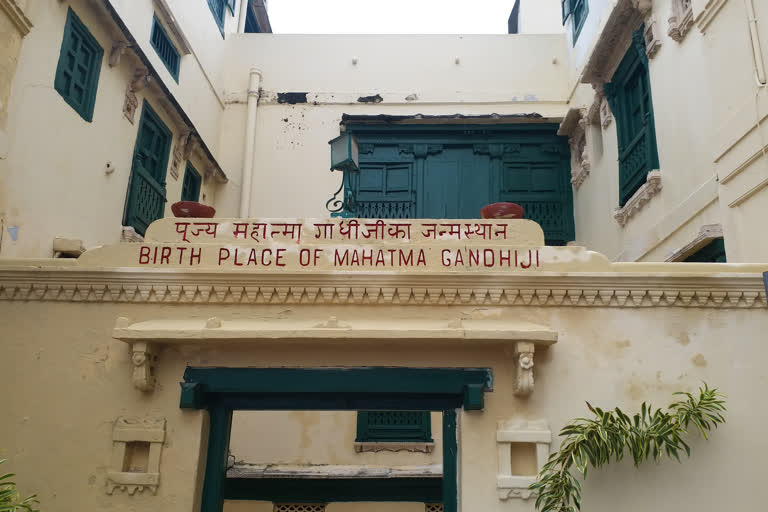Porbandar: Porbandar is a city in Gujarat's Saurashtra that is synonymous with Gandhiji's vivid experiences. As we approach the 75th anniversary of the country's independence, the strength of the Father of the Nation Mahatma Gandhi's heroic deeds has been set at its foundation. "Today I recall the life behind me when I was 10 to 15 years old and Gandhiji was slain," Narottam Palan, a well-known historian of Porbandar, remarked of Gandhiji's vital tie with the city.
Born in 1969 into a Vaishnava vanik family
On October 2, 1969, in Gujarat's Porbandar, Mohandas Karamchand Gandhi was born to a Vaishnava Vanik family. However, no one had done Gandhian grocery business in the three generations before him, and they were living as dewans of some royal state. Karamchand Gandhi, Mohandas Gandhi's father, was the Diwan of Porbandar state, as well as the Diwan of Rajkot and Wankaner. The Gandhi family was staunchly vegetarian, in line with Vaishnava tradition. Mohandas was married to Kasturba at the age of 13, as was customary at the time.
Early life and preliminary studies
Gandhi was an average student until he reached puberty, according to himself. He began his education in Porbandar and subsequently moved to Rajkot. After finishing his schooling, in 1888, he enrolled in Shamaldas College, which is connected with the University of Bombay, for advanced studies. He subsequently dropped out of college and returned to his family back in Porbandar.
With many of his family members in high-ranked jobs, Mohandas' family wanted him to become a lawyer. This allowed him to study in England. On September 4, 1888, Gandhi sailed for London from Bombay. He studied law in London.
In June 1891, Gandhi was called to the bar at the age of 22 upon finishing his degree, and left London for Rajkot. Eventually, in 1893, Mohandas was invited to South Africa as a lawyer for his cousin by Dada Abdullah, a Kathiawari merchant, who originated from Porbandar and was living at the time in Durban.
Gandhiji went to Africa in 1893
Gandhiji left Gujarat for South Africa in 1893 and lived there for 21 years, returning to India twice in between. Many historians have interpreted Gandhiji's 21 years in South Africa as a transition period from Mohandas to Mahatma. In the words of Nelson Mandela, "you gave us Mohan, and we gave you Mahatma". Gandhiji felt humiliated by the rules and actions of the British administration, particularly their ruthless treatment, in South Africa. Being the Diwan's kid, his two experiences of getting beaten up in Africa while being well-bred was a heart-wrenching incident resulting in life-long self-reflection.
There is a tomb of Dada Abdullah in Porbandar
Gandhiji was granted a one-year visa to visit South Africa. The tombs of Dada Abdullah and his brother Zaveri Seth may still be found at Porbandar's cemetery. Both Dada Abdullah and Zaveri Seth, as well as the lawyer who contested their case in South Africa, were from Porbandar.
Mohandas became well-known in Africa's Hindu community
Gandhiji's ingenuity had a profound influence on the Hindu community in Africa. As a result, even after Gandhiji's one-year permission had expired, the Hindu community advised him to stay, and he stayed in South Africa for 21 years instead of one. To make a livelihood in South Africa, Gandhiji practiced law for 21 to 13 years. His income from advocacy was also quite lucrative at the time.
